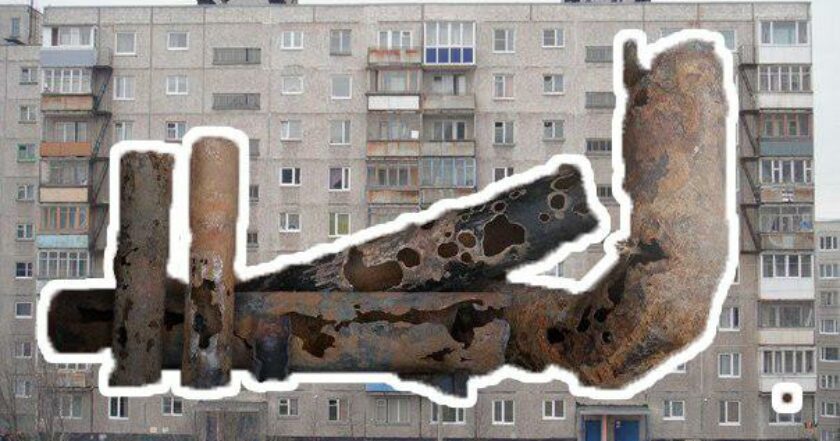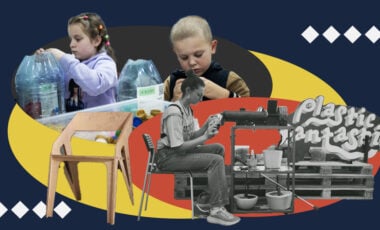How to "reboot" city's water supply system. Experience of the Moldavian city of Taraklia
In Sloviansk, a city in the Donetsk region with a population of just over 100,000 people, more than half of the residents experience a lack of water due to worn-out water supply networks, which leads to constant surges and disruptions in the water supply. Recently, the energy efficiency manager from Moldova, Yevhen Kamenshchyk, visited Sloviansk and told Rubryka exclusively about the five main steps on the way to providing the townspeople with high-quality water.

Стан труб системи водопостачання у місті Слов'янськ
Today, water supply is in a critical state in almost every city in the country. Networks are worn to the limit, equipment is outdated, and there is a shortage of qualified workers. To get out of the crisis, Ukraine's water supply and sewage industry require a minimum of UAH 40 billion. Even in Kyiv today, the need to replace water supply networks has reached 100 km per year. What can we say about the cities on the periphery?
Water by hours and 80% of worn out pipes: what is the situation in Sloviansk
Access to water is one of the most acute problems of Donbas cities, and it is not only related to hostilities. Yes, indeed, due to the armed conflict that has been going on since 2014 in the Donetsk region, the water supply for 3 million people has been stopped or completely blocked. It is what the head of the regional administration, Pavlo Kyrylenko, says. But difficulties with water supply began long before the war, and people suffer from this not only near the demarcation line.
Slovmiskvodokanal, a utility that provides water supply in Sloviansk, has been the poorest and most problematic among the city's enterprises for many years. Water outages in the city with a population of 100,000 have been going on for many years and have only intensified recently.
The main problem of Sloviansk Vodokanal is water loss due to network wear off and tear. It is 80%.
It turns out that only 2 of every 10 cubic meters purchased in the regional Donbas Water reaches the consumer. In addition, regular bursts of water pipes, some of which have not been changed since the 1970s, are a common sight in Sloviansk.
Residents of the city experience this as constant water supply interruptions. Water in the house is available only in the morning and evening for several hours. Sometimes the outage may be a day or more. Naturally, residents of Sloviansk are in no hurry to pay for what they see much less often than they would like. Not to mention the water quality — it is also far from the desired quality. Water debts are growing (now the population owes the enterprise more than 23 million hryvnias), which means that the debts of Slovmiskvodokanal itself are also growing.
The main items of the company's debts are payment for the purchase of water and payment for electricity.
Acting director Oleksiy Shurko said that the total debt to Donbas Water, from which Slovmiskvodokanal purchases water, is about UAH 87 million — such an amount has accumulated over about 10 years.
And even a constant increase in tariffs (currently, the tariff in Sloviansk is about 30 hryvnias per cubic meter) does not save the situation because people still hardly pay.
For now, constant financial support from the city council helps to get out of a difficult situation. According to Oleksiy Shurka, in 2019, assistance from the city authorities amounted to approximately 25 million hryvnias.
However, any reasonable person understands that this cannot last forever. You need to find a way out of the situation, and for this, it is best to seek the experience of those who have faced similar problems and were able to find the right solution.
How to solve the problem? Experience of a Moldavian city
Yevhen Kamenshchyk, an energy efficiency manager from Moldova, successfully implemented a project for the reconstruction of water supply networks in the small Moldovan city of Taraklia.
"Total wear off and tear of networks and equipment, damage, debts, water supply only for 8 hours a day — these were the problems in Taraklia. Trying to find a solution, we paid attention, first of all, to energy efficiency. We decided to work on this issue and were not mistaken," says Yevhen. He explained the sequence of steps in detail.
The first step is to increase the efficiency of the equipment. The largest share of expenses at any water utility, apart from the purchase of water itself, is the payment of electricity. And the largest electricity consumption is at the pumps that supply water to the consumer. The manager created a project in which he proposed to replace electric pumps with modern ones and thus, due to increasing energy efficiency, reduce electricity costs.
And he was not wrong. After installing new equipment, electricity consumption decreased by 50%. That is, the company began to accumulate 50% more finances. Water was supplied 24 hours a day.
"In addition, even old pipes began to break down less often, as water began to be supplied more evenly, without sudden pressure jumps, which usually cause pipe bursts," Yevhen adds.
The Taraklia city council partially allocated money to finance the project, and international funds partially helped.
By the way, there is such an opportunity in Sloviansk because international humanitarian organizations are also working in the Donetsk region and are ready to provide support.
The second step is the water loss analysis. Without it, there is nowhere to go further.
Tracking losses will help determine where pipes need to be replaced or where consumers make illegal cuts into the water supply. The most effective method today is to install a water meter on a separate street or house. Then it is clearly visible how much water has arrived in this sector and how much has been paid. Thus, with the help of a sectoral water meter, it is possible to determine a leak or an illegal insertion. Provided that all consumers have individual meters, then it is possible to calculate how much water was received and how much was recorded on individual meters. The difference is a leak or an illegal insert.
The third step is the transformation of water utilities into an efficient organization.
Waterworks need capacity-building (development and increase, first of all, of personnel potential). Competent energy management is required to help get out of debt and attract funds for updating the water supply infrastructure, including by applying for international programs, communicating with the central government, and rationally using the tariff. The only way to achieve this is to increase wages and motivate employees to study and constantly improve their skills. "It is almost impossible to attract a competent specialist for the minimum salary," Yevhen shares.
The fourth step is to provide citizens with drinking water by constructing pumping stations. In the case of Moldavian Taraklia, the city management decided that it would be more appropriate to install pump stations and treatment plants. Water in pumps was purified by reverse osmosis. It is essential that international organizations can finance the installation of water access points within the framework of humanitarian projects. In Taraklia, the construction of one pumping station cost 25,000 euros. It was invested as part of the Swiss water supply and sanitation project in Moldova ApaSan. The installation of pump stations for the city was free of charge.
The construction of pumping stations can be considered an alternative to a centralized water supply if the city hall, for some reason, cannot yet decide on radical steps to improve the water supply in its city.
It is also worth noting that pumps are a quick solution to the problem. The toilets in Taraklia were built literally in a month. At the same time, centralized pipe replacement can take years.
Fifth and most importantly, in Yevhen's opinion, the decision on such fundamental issues for the city should first be demanded by the public. As a rule, the authorities rarely undertake to move things from a dead point due to the high cost of projects (the usual line of behavior for any city administration is to solve minor problems as they arise). And for this to happen, there must be public demand. Such programs should be initiated primarily by the city residents themselves. Only with constant activity and interaction of citizens with the authorities can the matter move from the dead point.



























































